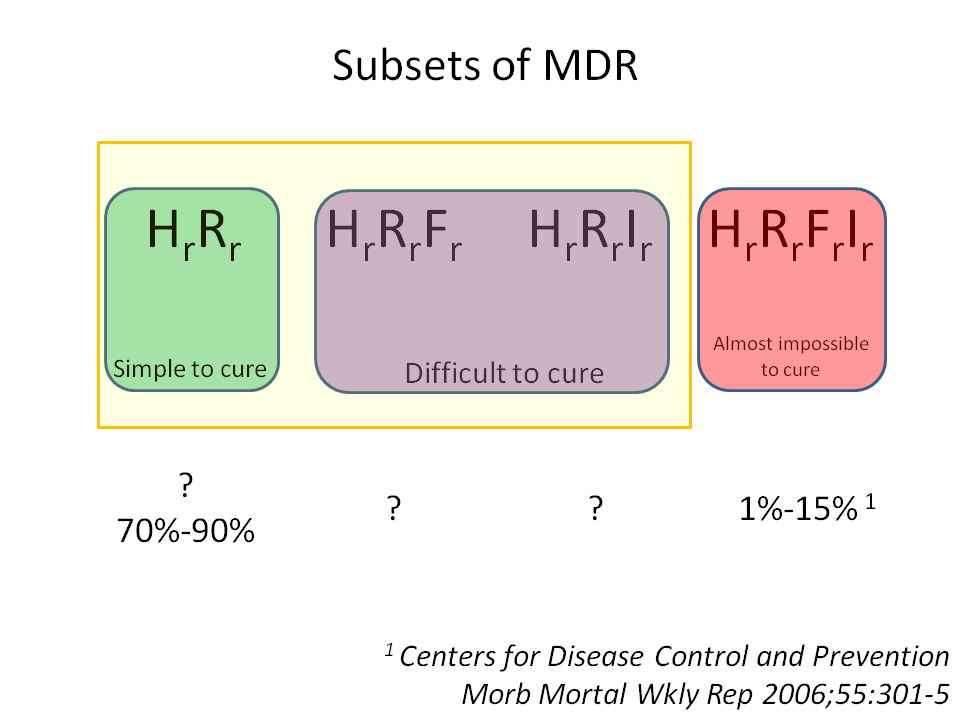 |
|
| |
|
|
| Slide |
089 |
Interventions for Tuberculosis Control and Elimination |
 |
Next |
 |
 |
Previous |
 |
First |
 |
Last |
Because resistance is acquired sequentially in parallel with the introduction of the individual drugs into the arsenarium, isoniazid resistance is most commonly followed by additional resistance to rifampicin as it is part of the first-line regimen, most widely used. Only once additionall other drugs or drug classes, such as fluoroquinolones or injectable drugs other than strepomycin are introduce, is it possible that resistance to the latter two classes is acquired.
Most cases of multidrug-resistant tuberculosis will be just that, resistance to rifampicin plus isoniazid without additional resistance to fluoroquinolones and / or other injectable drugs. Curiously, very little is known about the proportional distribution of the four groups listed above, except that in non of the countries studied was resistance to all four drugs / drug classes exceeding 15%, and was commonly much lower.
"Simple" multidrug resistance is fairly simple to treat (see subsequent slides), while on the other end of the spectrum, what is called "extensively drug-resistant tuberculosis" (multidrug resistance including resistance to fluoroquinolones and second-line injectable drugs) is currently virutally impossible to treat successively. Little is know about treatment of the two intermediate groups, but given the role of both fluoroquinolones and second-line injectable drugs, such cases will be more difficult to treat than "simple" multidrug-resistant tuberculosis but most likely have a better outcome than extensively drug-resistant tuberculosis. |
| |
|
Go to top
Last update:
September 29, 2010